Where was the Garden of Eden?
By Sarah Liberman
These articles were published from September 2021 through February 2022 in the Personal Letter.
What is presented here is one theory about the location of the Garden of Eden. For another view, see this article: https://www.icr.org/article/where-was-garden-eden-located/
Part 1: Originally published in the September 2021 Personal Letter.
When I asked you, kind Reader, if you would like to know more about the Garden of Eden being in Jerusalem, the response was overwhelmingly positive. Thus begins my new series of letters in which we will explore the themes both Biblical and cultural that support this claim. Throughout the series, I will share many important and valuable revelations — “keys” — not only about Eden but also about Jerusalem, Heaven, and God’s plan for mankind.
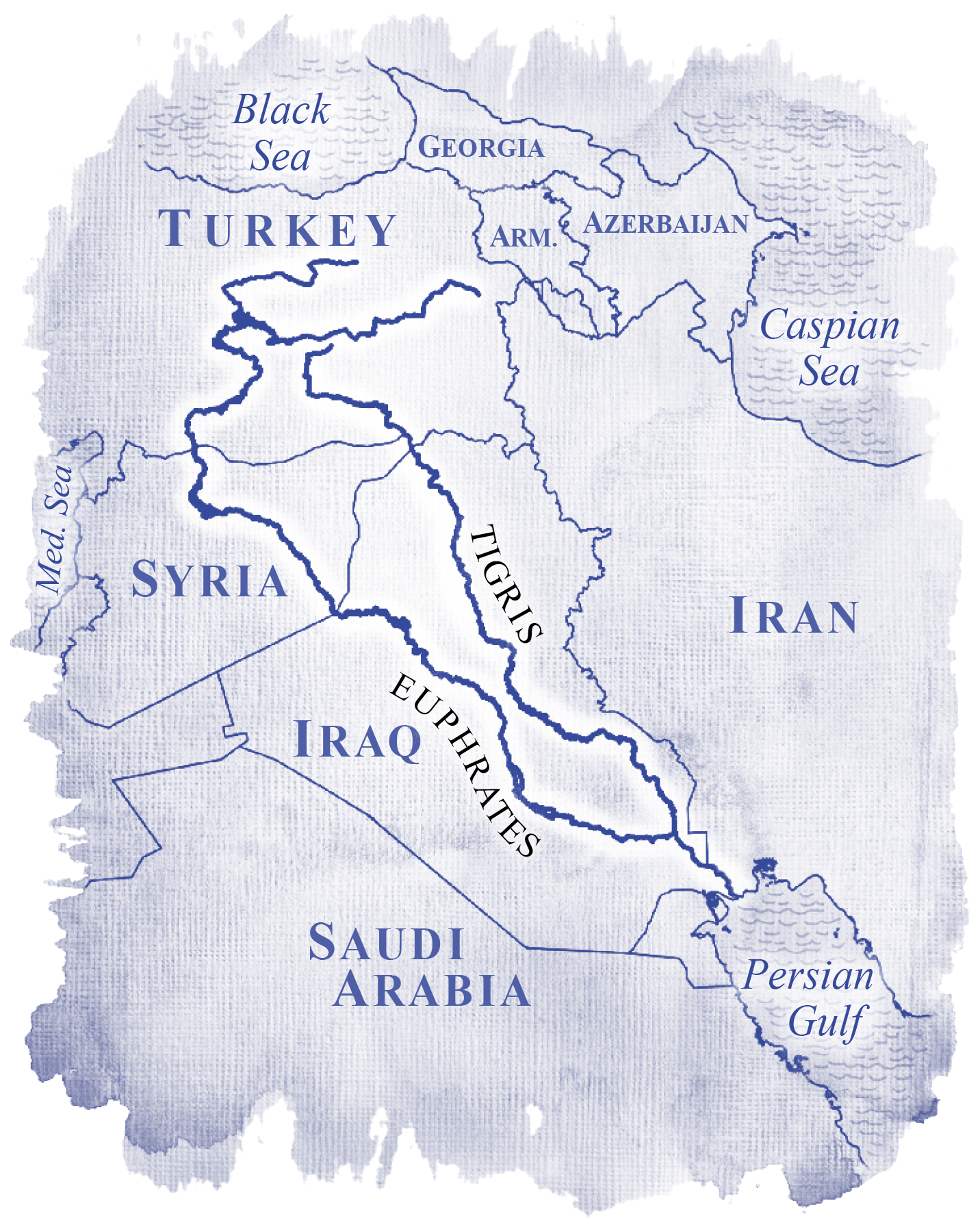
Before we can investigate whether the Garden of Eden was located where today’s city of Jerusalem stands, we must consider two points:
- Realize that the Garden of Eden was, in fact, a physical place on Earth. In the Creation story, Adam and Eve resided in a garden somewhere on Earth from which they were later cast out. This situation begs the questions: If the Garden of Eden is a physical place on Earth, then where is it now? Can we find it?
- Determine the validity of options other than Jerusalem for its location. Throughout history, scholars widely accepted a view that supported the Garden of Eden being somewhere in Mesopotamia. The literal translation of the word mesopotamia is “the area between two rivers.” Genesis 2:10–14 mentions four major rivers springing from within the Garden of Eden: Pishon (Hebrew: פִישׁוֹן Pison), Gihon, Hiddekel (Tigris), and Euphrates (Phrath).
THE KEY OF FOUR RIVERS
The locations of the Pishon and Gihon rivers are unknown today; however, modern maps clearly identify the Tigris and Euphrates. Thus, even premier theologians suppose that the Garden of Eden was somewhere in the region of these rivers. Today this area stretches between Iraq, Turkey, Armenia, and the Persian Gulf. Could scholars have been wrong all along?
Similar to my writing about Armageddon, the answer is found in careful reading of the Biblical text (yes, there is a theme developing here): “A river watering the garden flowed from Eden; from there it was separated into four headwaters” (Genesis 2:10). Today’s Tigris and Euphrates rivers do not answer this description, as their sources are located hundreds of miles apart from each other … and they flow in the wrong direction! Note: the river that flowed from Eden was the single source of the four rivers. From there, they diverged and watered the Earth.
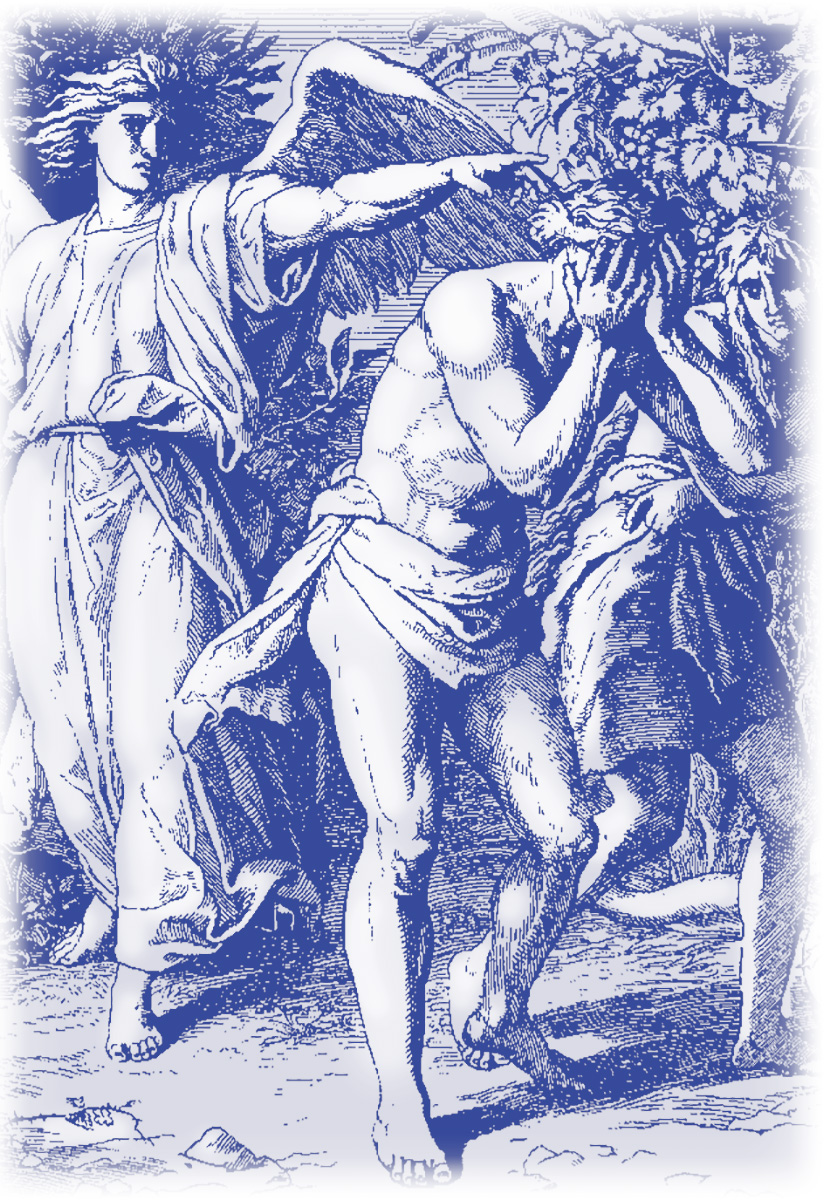
The Key of Eden
The Creation story in Genesis provides a few more clues where to look. We know that:
- the Garden of Eden was planted by God in a place called Eden — “Now the Lord God had planted a garden in the east, in Eden;” (Genesis 2:8a)
- the garden was on the east side of Eden
- the river of Eden sprang from Eden eastward and watered the garden.
The Hebrew words used to describe the Garden of Eden in the east have dual meaning. The literal translation of the word Eden means “a place of pleasure.” But also wrapped into Eden is the root of the word aa-d (עד), which means “forever” or “eternity.”
The word used for east is not Mizrach (מזרח) “place of sunrise” (as in north, south, east, west); instead, the Writer uses the word Miqedem (מקדם), which means “east” but also means “from the beginning” or “from the ancient time.” The root of Miqedem is the same root for “moving forward,” so the dual meaning reads: There was a garden planted on the east side of Eden; it is also a garden of pleasure from ancient time to eternity.
Separation Theory
A popular answer to why we can’t find the Garden of Eden today is that it was destroyed in the flood during the time of Noah. This is also the explanation offered for not locating the Pishon and Gihon rivers mentioned in Genesis and why the rivers we do see differ in location and origin from what Scripture describes.
A young Israeli Messianic tour guide, Steven Harel, is currently writing a book about this and other topics related to Jerusalem. He shared a theory with me that could explain why we can’t find the Garden of Eden today: When Adam and Eve were cast out from the Garden, the curse of sin meant that they were now permanently separated from the presence of God. But this was not the only outcome.
When God sent Adam and Eve away, He cursed the earth as well (Genesis 3:17). The consequences of sin were to manifest not only in the lives of humans but throughout creation itself. Harel hypothesizes that the separation from God was like death … not only for man but also for the ground.
Human reality comprises two dimensions: the physical and the spiritual. We accept that when a person dies, their spirit (in Jewish thought, the “soul”) leaves the body and drifts upward. We also know that God told Adam and Eve they would die if they ate the forbidden fruit (Genesis 2:16–17). But they didn’t die immediately upon eating it. Rather, it was a slow and gradual process of degrading until, over time, they eventually died after living a condemned life on the cursed earth. As the generations followed, the lives of their children and grandchildren, etc., became shorter and shorter.
Just as man was cursed and separated from God, His glory, and His presence (the spiritual realm that we know today), Separation Theory presents the view that Creation itself also experienced a slow and gradual separation of the spiritual from the physical. According to this idea, God’s glory slowly separated from Creation as the effects of sin began to manifest, bringing us to the point today where animals eat each other and nature suffers decay, drought, and destruction.
If this Separation Theory is valid, then the Garden of Eden in the spiritual sense — with the presence of God and animals that could talk — would have slowly separated from physical Earth. Floating upward (as our spirits do), that realm is now waiting for the Lord’s return and the new Jerusalem, which will descend to Earth. (We will explore the New Jerusalem later in the series.) Over time, when Adam and Eve returned to where the Garden had been, they would find less and less of God’s presence there until one day, they — or perhaps one of their descendants — would not find any at all.
Creation’s Longing to Be Set Free
On a recent hike, I pondered this Separation Theory, trying to decide if I agreed with it and whether I could find reasonable Biblical evidence to support it. Looking around me, I noticed the state of nature as I walked by. I considered that once, perhaps, the trees and the rocks around me could worship the Creator and be heard. I saw the dry grass and dying trees desperately needing water, and realized that they are not in their most perfect state.
Perhaps this is why the Bible says, “…the creation waits and groans with eager longing for the revealing of the children of God; for the creation was subjected to futility, not of its own will but by the will of the One who subjected it, in hope that the creation itself will be set free from its bondage to decay and will obtain the freedom and glory of the children of God” (Romans 8:19–21).
During my certification studies in music, audio, and video production, I learned that humans have the physiological ability to process sounds that are much higher and lower in frequency than what we can hear now. We should also be able to see colors like infrared/ultraviolet etc., but we are somehow limited. Thus, while our bodies could perhaps originally process these sounds and colors, our brains no longer interpret this information. Now we can only hear and see to more limited extents.
One day, in Heaven, all our senses will be restored. Apostle Paul wrote to the Corinthians about this concept, comparing our current state to a dim mirror:
“For now we see in a mirror, dimly, but then face to face. Now I know in part, but then I shall know just as I am fully known.” – 1 Corinthians 13:12
This state of separation was never God’s plan for us or for Creation. In the coming months, each of my messages will present a new set of keys that will build on the previous, so you will want to catch every installment. I will discuss the keys of the Holy Hill, sacrifice, the two trees, restoring waters, the Mount of Olives, inheritance, the Tabernacle, paths, and others.
It is my hope that these keys will unlock doors to exciting revelations about how Believers (“Believers” is short for “believers in Yeshua/Jesus as Messiah”) can better understand Scripture and God’s magnificent plan of redemption from the curse of sin for all of mankind and the Earth.
Part 2: Originally published in the October 2021 Personal Letter.
In the last part, we began exploring Biblical and cultural themes suggesting that the Garden of Eden was located where the city of Jerusalem has stood since time immemorial. During this series, I’m sharing what I call “keys” — important revelations not only about Eden but also about Jerusalem, Heaven, and God’s plan for mankind.
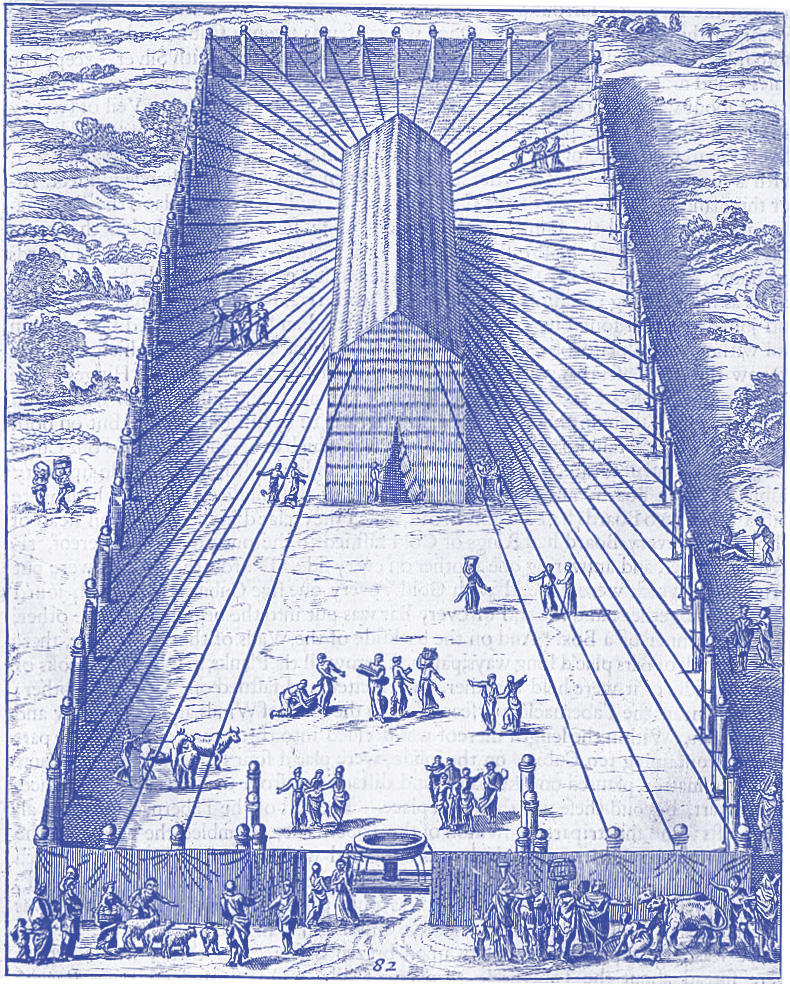
In the first part of this series, I introduced two keys:
- Four rivers: According to the Book of Genesis, a single river originated in Eden and split into four. Based on today’s location of two of these rivers, claims about Eden being located in the area of ancient Mesopotamia don’t line up with the depiction in Scripture.
- Eden: The full meaning of the name “Garden of Eden” in Hebrew (Genesis 2:8a) is a garden of pleasure from ancient time to eternity.
Part 1 also discussed Separation Theory, which posits that when God cast Adam and Eve out of the Garden of Eden, He cursed the ground as well (Genesis 3:17). Thus, the consequences of sin manifested not only in the lives of humans but throughout Creation itself. Separation Theory hypothesizes that Creation also experienced a slow and gradual separation of spiritual and physical planes (like human death). According to this idea, God’s glory slowly departed from Earth and the place where the Garden of Eden once stood, floating upward until, one day, man couldn’t find it anymore. Today, Nature remains in that sad, fallen state where animals eat one another and Earth suffers decay, drought, and destruction.
This state of separation was never God’s plan for humans or for His Creation.
THE KEY OF THE TABERNACLE
When God told Moses to build the Tabernacle, He set out very detailed instructions about every aspect of the building of this “tent of meeting” and its elements (Exodus 25–40). Oftentimes, while reading the Torah (the Five Books of Moses: Genesis to Deuteronomy), we glaze over “boring parts” like instructions and measurements.
I am currently writing a book about God’s discipleship in our lives. It is an in-depth study of God’s patterns of worship in Heaven, in our hearts, and in the Tabernacle. Through my research, I have discovered how these details reveal God’s redemption plan for humankind. Here are two aspects about the Tabernacle that relate to the Garden of Eden:
1. EASTWARD
When Adam and Eve were cast out of the Garden, they were sent to the east — they began walking away from God’s manifest presence in an easterly direction. This geographical direction plays an important part in the early history of mankind: The city of Babylon was established in the east (Genesis 11:2). So were the cities of Sodom and Gomorrah (Genesis 13:11). As men walked eastward, we see them fall farther and farther away from God.
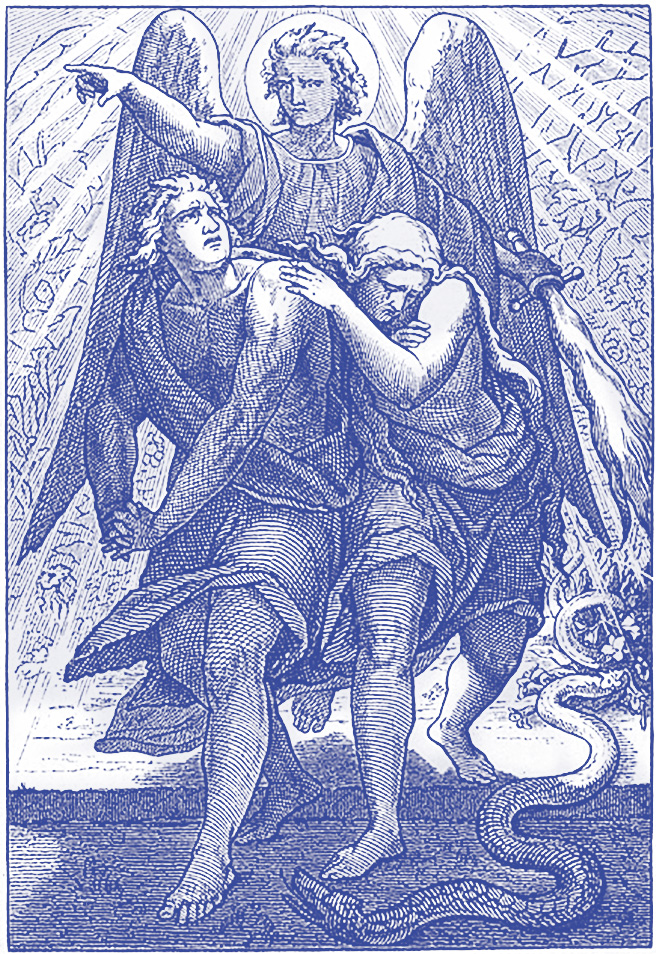
When God instructed Moses to erect the Tabernacle (tent, altars, perimeter, entrance etc.), God specifically oriented the Tabernacle’s opening to the east. Every time the people of Israel collapsed and packed up the Tent and the Tabernacle elements to move them, when they put them back up, the opening always faced the east. When Solomon built the First Temple, its doors opened to the east. King Herod’s Second Temple followed the same pattern.
This easterly orientation is purposeful and meaningful. In Hebrew, the word repentance is Te-shu-vah — literally, “to turn around and come back.” God oriented the openings to the east in anticipation that man, still progressing eastward, will one day repent — turning around and walking back (westward) toward the presence of God.
2. THE CHERUBIM
The first Biblical mention of the cherubim appears in Genesis 3:24: “So He drove out the man; and He placed cherubim at the east of the Garden of Eden, and a flaming sword which turned every way, to guard the way to the tree of life.” After Adam and Eve left the Garden, God placed two mighty beings called “cherubim” to guard the entrance to the Garden, preventing Adam and Eve’s return.
The next time the Bible mentions cherubim is in Exodus 25, where Moses received the detailed building instructions for the Tabernacle. Two of these cherubim were to sit one on each side atop the Ark of the Covenant. However in chapter 26, God instructed Moses further concerning cherubim: “You shall make a veil of blue and purple and scarlet material and fine twisted linen; it shall be made with cherubim, the work of a skillful workman” (Exodus 26:31).
This scarlet material would become the veil that separated the Holy Place and the Holy of Holies where the Ark of the Covenant stood. God instructed Moses to make the veil with a depiction of cherubim on it to represent the cherubim that were inside, seated on each side of God’s mercy seat. Once the veil was in place, those cherubim would be hidden and no longer visible; but they were there.
As Yeshua died on the cross, this veil of partition preventing access to the Holy of Holies was ripped from top to bottom (Matthew 27:51). This was the only change to occur in the Temple, and it symbolized the access for us to God’s manifest presence that Yeshua purchased with His death. The entrance to the Garden that the Cherubim guarded was now open.
THE KEY OF THE HOLY HILL
You may be familiar with the Biblical idea that Jerusalem is built on the “Hill of the Lord.” The Bible describes Jerusalem as “the mountain of the Lord” or in connection with “God’s Holy hill” at least 24 times. Isaiah 14:13 describes Satan trying to ascend higher than God’s heavenly throne above the stars, using the Hebrew words Har (mountain) Moed (meeting), which directly relate to the word “Tabernacle” — Ohel (tent) Moed (meeting).
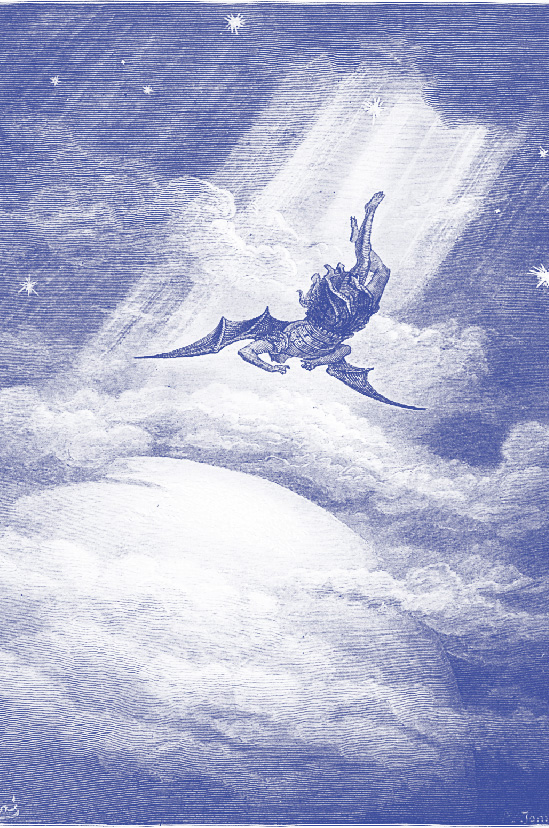
There exists a physical “hill of the Lord” in Jerusalem to which the Tabernacle would travel and find its permanent resting place in the Temple built by King Solomon. In addition, there is a heavenly mountain that is a place of meeting with God. However, you may not realize that there was also a mountain in Eden.
The prophet Ezekiel offered a description of Satan parallel to one found in Isaiah 14: “You [Satan] were in Eden, the garden of God; … You were anointed as a guardian cherub, for so I ordained you. You were on the holy mount of God; … You were perfect in your ways from the day you were created until wickedness was found in you.” (Ezekiel 28:13–15).
We can conclude from these Scriptures that God’s sanctuary is in the heavenly Eden. We have previously established that God planted a garden to the east in Eden and that it contained a river that flowed to the east. Now we see that Eden also has a mountain or hill in it.
Jerusalem is the physical place on Earth of God’s sanctuary. There is also a garden to the east of Jerusalem — the garden of Gethsemane (more on this in a later letter) — and Jerusalem will, in the future, have a river that flows downward and eastward from it.
The New Testament describes the New Jerusalem descending down to Earth from Heaven (Revelation 21:2). If Separation Theory is correct, then that event will culminate the reunification of Heaven and Earth as the heavenly Eden reunites once again with the earthly Eden.
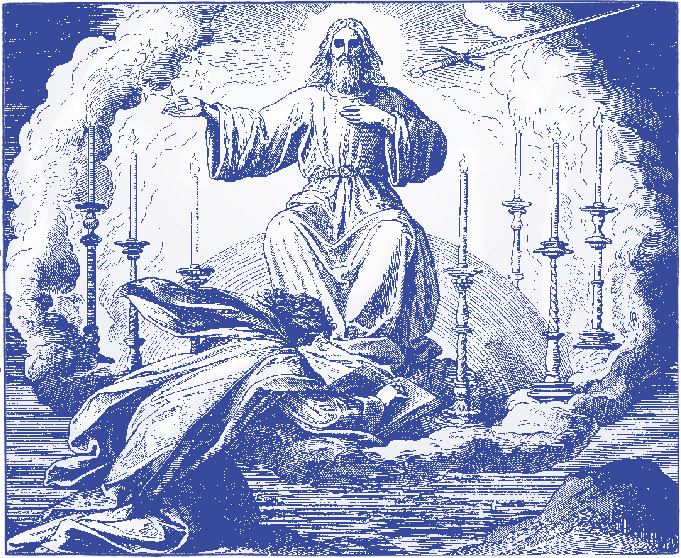
This separation that was caused by man’s sin will be finally and fully overcome. The result of Jesus/Yeshua’s victory will be manifest physically and completely on Earth. This is what John described in his vision: “Then I saw a new heaven and a new earth, for the first heaven and the first earth had passed away, and there was no longer any sea.” (Revelation of John 21:1).
It is interesting to note that many occult themes deal with “things above and things below,” the unification of all things, the tree of life, and many others that parallel what we find in the Bible. Satan’s kingdom heavily promotes these ideas. We know that Satan cannot create; he can only copy (John 19:11). He twists the truth of God, hoping to ensnare man in his lies.
In the upcoming parts, I will present a growing collection of keys in each letter that will build on the previous keys. I hope that these keys will unlock doors to exciting revelations of Biblical truths about how Believers (in Yeshua/Jesus as Messiah) can better understand God’s magnificent plan for redeeming mankind from the curse of sin and restoring Creation.
You can look forward to reading about the following keys: sacrifice, two trees, restoring waters, Mount of Olives, inheritance, two women, circling paths, and others.
Part 3: Originally published in the November 2021 Personal Letter.
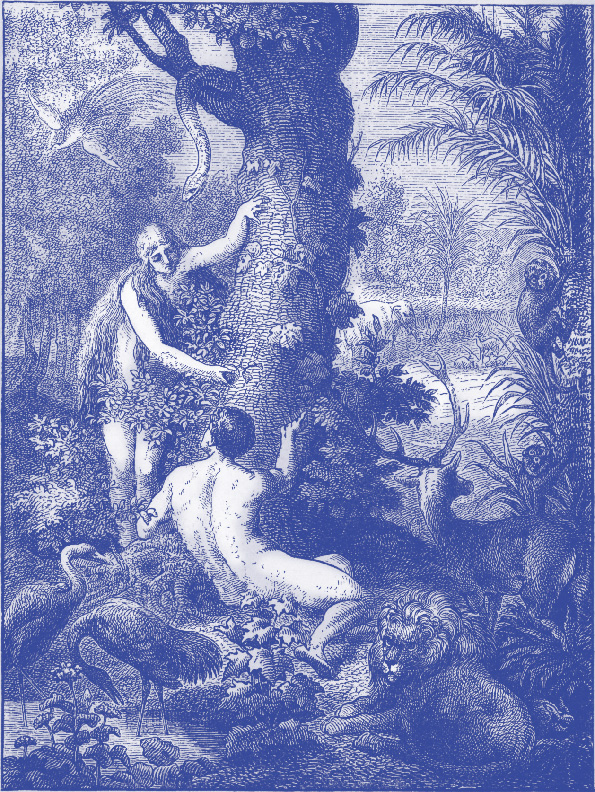
God planned your redemption from the time of Eden, and I want to help you see how specifically He explains His plan through His Word, the Holy Bible.
In the last part we discussed several new keys:
- The key of the Tabernacle — eastward: The opening of the Tabernacle was always set toward the east, in the direction Adam and Eve were cast out of Eden after they sinned. The significance of this eastward orientation is found in the Hebrew word for repentance: T’shuva. T’shuva means “turn around and return in the direction you came from.” God has set a detailed pathway through the Tabernacle, ready for the moment when man decides to turn around and return to the Lord.
- The key of the Tabernacle — cherubim: The Tabernacle was an earthly image of God’s heavenly throne room, the place where God’s Presence is fully manifested. God instructed Moses to design images of cherubim on the veil that separated the Holy Place from the Holy of Holies (Ex. 26:31). These images depicted the cherubim that God had set to guard the entrance to the Garden and restrict humans from entering (Genesis 3:24). When Yeshua/Jesus died on the cross, this veil was torn in two, showing that Yeshua paid the price of our sin that separated us from God.
- The key of the Holy hill: The city of Jerusalem is set on a hill, with a river that will one day flow eastward from it. This hill is the final resting place of the Tabernacle — the “tent of meeting,” the Temple. Eden also had a hill in it — “the hill of meeting” — and a river that flowed eastward out of it.
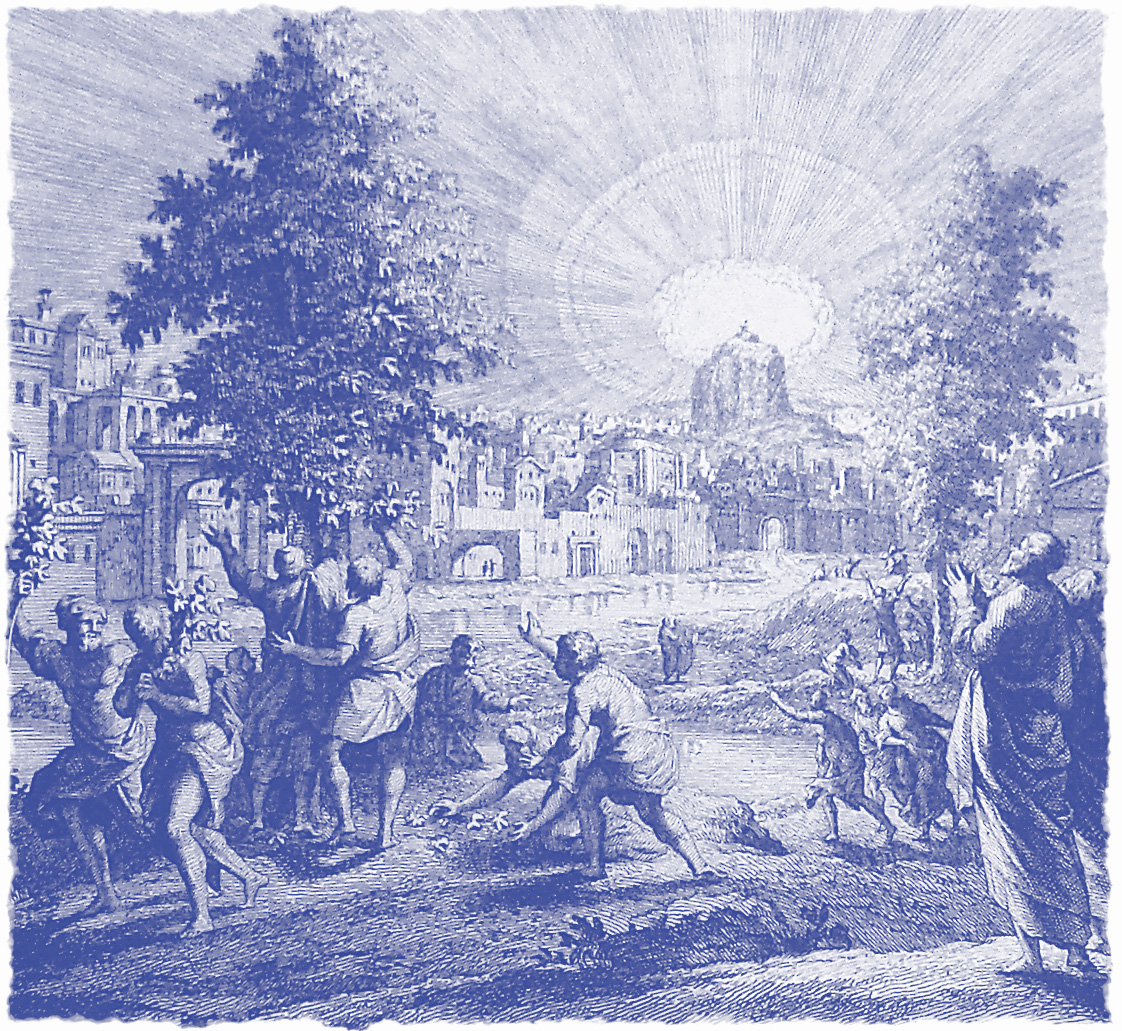
THE KEY OF THE TWO TREES
When God created the Garden of Eden, He placed many trees in it. He told Adam and Eve that they could eat from any of the trees except the tree of the knowledge of good and evil (Genesis 2:17). After they ate from this tree, God’s cherubim guarded Eden’s entrance so that man would not be able to eat from the tree of life in his fallen state. We find the Garden of God mentioned again in the Book of Revelation, along with the tree of life: “To the one who overcomes, I will grant to eat from the tree of life, which is in the Paradise [Eden] of God” (Revelation 2:7).
In this verse, Yeshua promises His disciple John that He will restore access to the tree of life in the Garden of Eden to those who hear what the Spirit of God is saying, and overcome.
We read about the tree of life again in the last chapter of Revelation. This time the tree appears in the context of a city: “Then the angel showed me the river of the water of life, as clear as crystal, flowing from the throne of God and of the Lamb down the middle of the great street of the city. On each side of the river stood the tree of life, bearing twelve crops of fruit, yielding its fruit every month. And the leaves of the tree are for the healing of the nations” (Revelation 22: 1–2).
The tree is mentioned in the context of the city twice again:
- Revelation 22:14: “Blessed are those who wash their robes, that they may have the right to the tree of life and may go through the gates into the city” and
- Revelation 22:19: “And if anyone takes words away from this scroll of prophecy, God will take away from that person any share in the tree of life and in the Holy City, which are described in this scroll.”
Thus, according to Revelation chapter 2, God will grant the righteous access to the tree of life in the Garden of God. And according to chapter 22, the righteous will have the right to the tree of life in God’s Holy City. Are these two different locations? Or are the Garden and the city in the same place?
THE KEY OF THE MOUNT OF OLIVES
The Mount of Olives derived its name from the olive trees that grow on and around it. The Bible mentions it at least 12 times. One of these times mentions its geographical location — east of Jerusalem (Zechariah 14:4). Yeshua spent time teaching His disciples on this mount. It is also next to the house of Mary, Martha, and Lazarus — where Yeshua frequently stayed when visiting Jerusalem.
The Mount of Olives also had gardens on it (John 18:1). Today, the traditional — not necessarily the historical — site of the Garden of Gethsemane is at the foot of this mount. As we saw in last month’s letter, Adam and Eve were cast out of a garden east of Eden.
Could it be that the act of opening the way for mankind’s restoration — the ultimate payment for Adam and Eve’s original sin — would occur in the exact same place?
Four major roads led in and out of Jerusalem. The road from the east came from Jericho through the Mount of Olives. Galileans used it to avoid the shorter, more direct route via Samaria. When Yeshua rode into Jerusalem on a donkey from the Mount of Olives, thousands walked with him (Matthew 21:8–9).
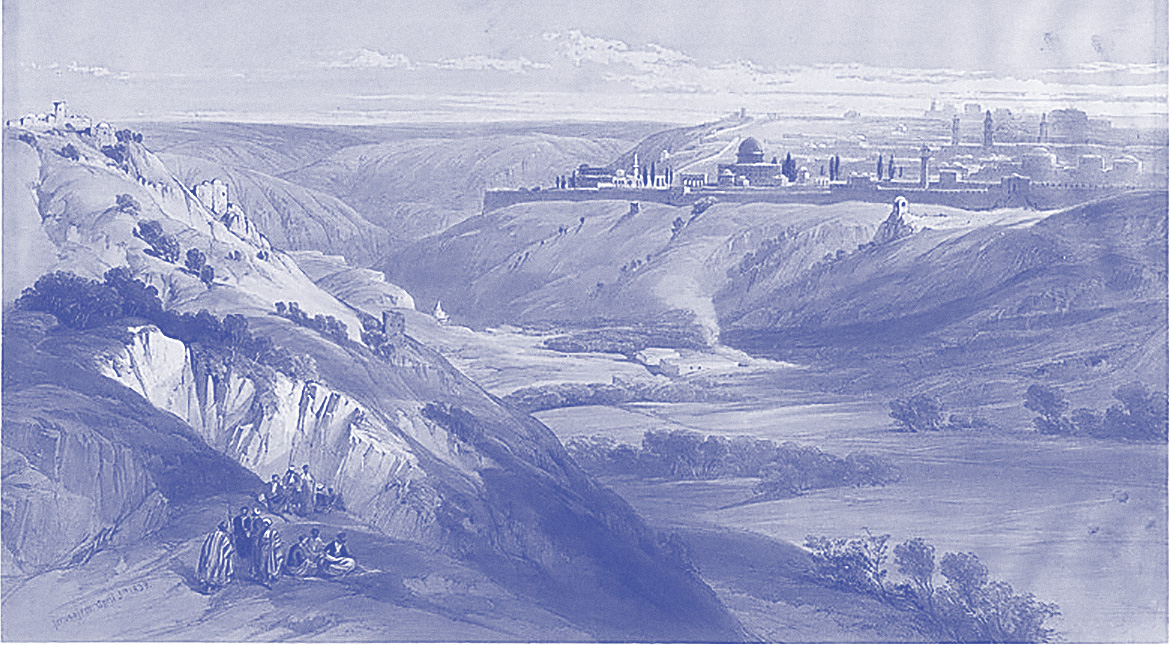
The Mount of Olives has the highest elevation in the area, rising above Jerusalem and the Temple Mount itself. The Bible tells us that when Yeshua was crucified, His disciples could watch it from “a distance” (Luke 23:49). The Romans crucified people along major roads so that as many people as possible would see the crucified. The Mount of Olives is the only location that would make this possible and is outside the city itself (Hebrews 13:12). Additionally, Yeshua was crucified in a place with a garden (John 19:41), which also fits the description of the Mount of Olives.
The New Testament offers three descriptions of the Crucifixion: Matt. 27:50–54, Mark 15:37–39, and Luke 23:44–47. These descriptions relate four concurrent supernatural events that occurred at the time of Yeshua’s death and that caused the Roman centurion to believe in God:
- The sky went completely dark in the middle of the day.
- Yeshua cried out as He died, committing His spirit to God.
- An earthquake released many dead from their tombs nearby.
- The veil in the Tabernacle was torn from top to bottom.
Everyone around Jerusalem saw the darkness and everyone felt the earthquake. So what did the centurion see that was so special? And how (according to Matthew) did the centurion see the torn veil? If the centurion (who was standing next to the cross) saw the veil torn in two, the only place this could have happened was on the Mount of Olives.
We already learned that the Temple opening faced eastward; therefore, the Holy of Holies was on the west side of the building. The Temple Mount rises 2,427 feet above sea level. The Mount of Olives stands taller, at 2,709 feet above sea level. Historian Josephus Flavius described the Temple sanctuary as being 150 feet higher than the top of the gates and walls that surrounded it.
According to my friend Steven Harel (Steven is the Messianic Israeli tour guide referenced in September’s PL on Separation Theory), this meant that if you were standing higher than approximately 2,460 feet on the Mount of Olives directly opposite the Temple, you would be able to see the veil in the sanctuary. (During the feasts, the second veil that sealed off the Holy Place was opened so people could see into the Temple.)
Just imagine this scene: Yeshua hanging crucified and gazing into the Temple at the cherubim on the veil guarding the entrance to the Holy of Holies.
Today, the Dominus Flevit Roman Catholic church (“the cry of the Lord”) occupies that location on the Mount of Olives. It is shaped like a tear drop.
Still to come: the sacrifice, restoring waters, the inheritance, the two women, the circling paths, and others.
Part 4: Originally published in the December 2021 Personal Letter.
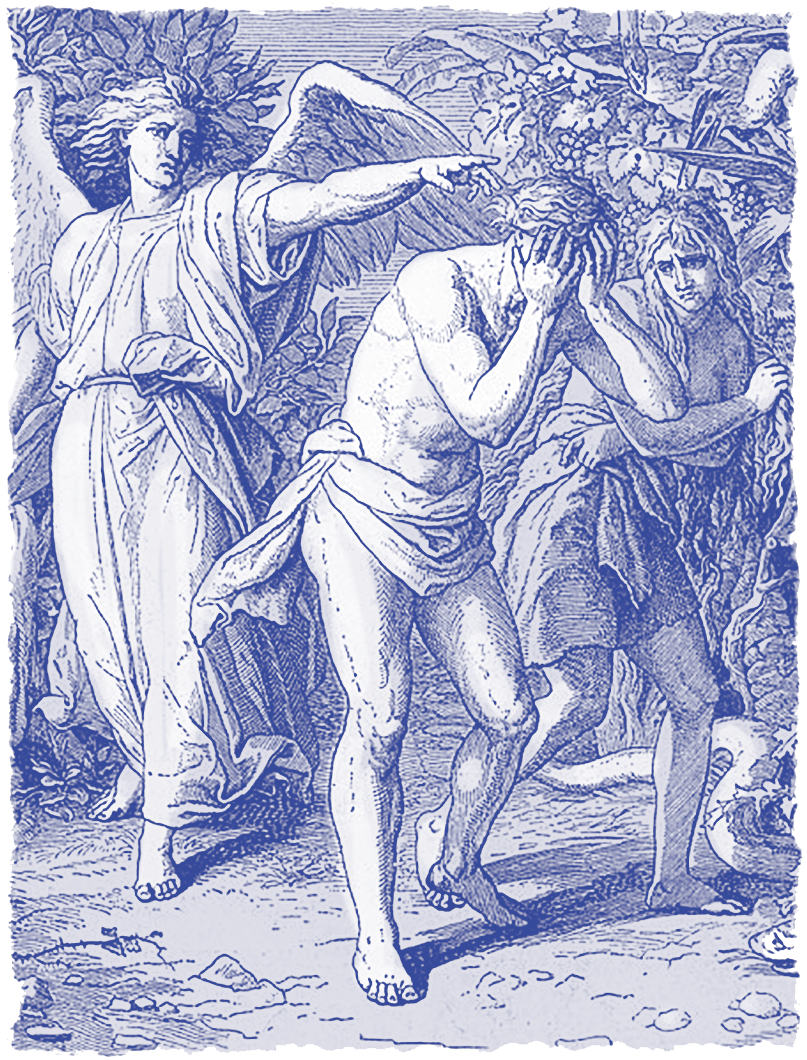
In the last part, we discussed two keys:
- The key of the two trees: After Adam and Eve ate the forbidden fruit, God blocked the entrance to the Garden of Eden, where the tree of life stood. In the Book of Revelation, this same tree of life appears; however this time, it is in a Holy city: the new Jerusalem. Could the garden and the city be the same place?
- The key of the Mount of Olives: The Bible gives some significant geographical evidence that the site of the Crucifixion was on the Mount of Olives, opposite and in view of the Temple’s entrance in Jerusalem. If this is true, then as Yeshua/Jesus hung on a tree on the east side of Eden, He could see the Cherubim on the Temple veil that separated the entrance to the Holy of Holies, the same veil that ripped as He died (Matthew 27:50–51).
The Key of Inheritance
When Adam and Eve were cast out of the garden (Genesis 3), they lost their inheritance: their place in the Garden of Eden. As a result, all of the succeeding generations — and even we today — have been dispossessed of that paradise. The first 11 chapters of Genesis detail the history of God and all of mankind from the time of Creation.
In chapter 12, God decides to focus on one man, Abraham. God promises that through Abraham’s seed, the whole world will be blessed. God asks Abraham to set out from the place where he was born and go to a place God will show him that will be the land of the promise.
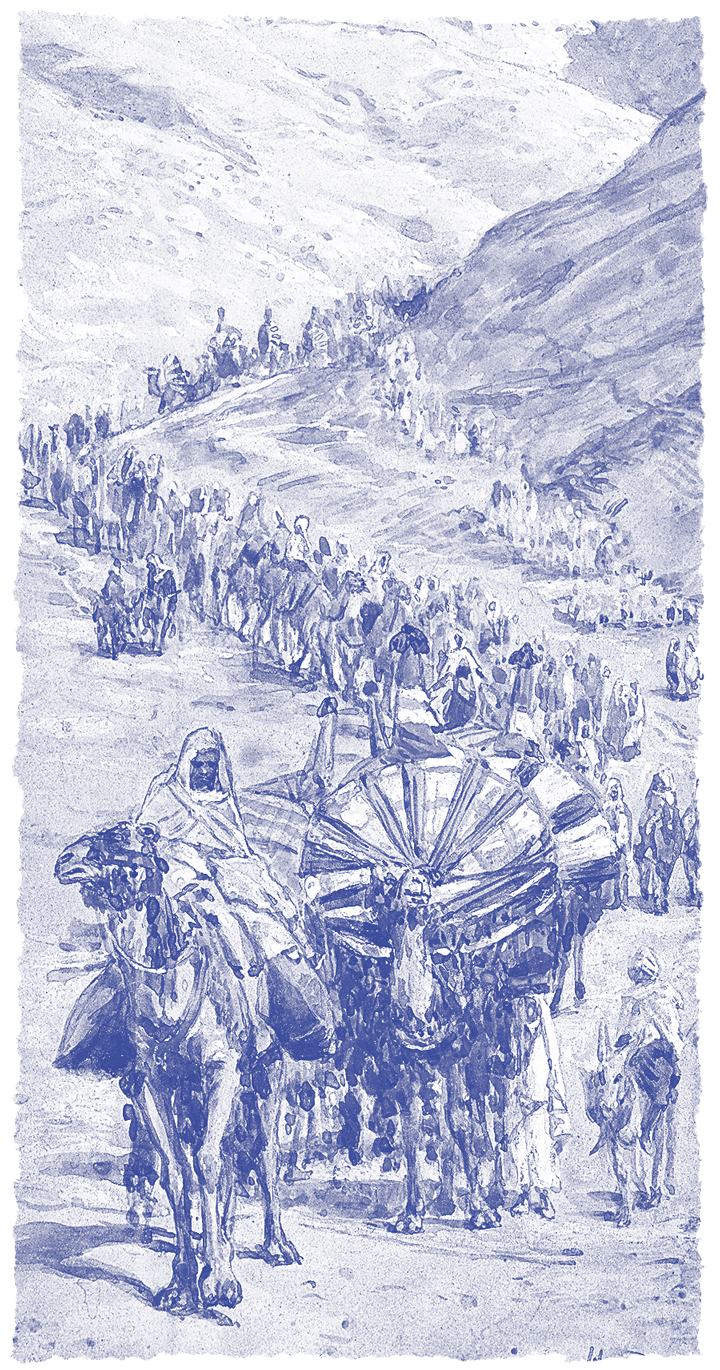
While Abraham doesn’t know where he is going, God leads him to the land of Israel. The writer of the Book of Hebrews reveals a spiritual secret: “By faith Abraham, when called to go to a place he would later receive as his inheritance, obeyed and went, even though he did not know where he was going. By faith, he made his home in the promised land like a stranger in a foreign country; he lived in tents, as did Isaac and Jacob, who were heirs with him of the same promise. For he was looking forward to the city with foundations, whose architect and builder is God” (Hebrews 11:8–10).
The writer continues: “All these people were still living by faith when they died. They did not receive the things promised; they only saw them and welcomed them from a distance, admitting that they were foreigners and strangers on earth. People who say such things show that they are looking for a country of their own. If they had been thinking of the country they had left, they would have had opportunity to return. Instead, they were longing for a better country — a heavenly one. Therefore God is not ashamed to be called their God, for He has prepared a city for them” (Hebrews 11:13–16).
Though Abraham was searching for a physical land for his and his descendants’ inheritance, the writer of Hebrews claims that there is another, spiritual inheritance, and it is also a city. When Abraham comes to the land God shows him, God asks him to sacrifice his only son, Isaac. God leads Abraham to a specific place — Mount Moriah, which we know is today’s location of the city of Jerusalem — to perform this sacrifice. It is the same place where, forty-two generations later (Matthew 1:17), God sacrifices His only Son, Yeshua, giving all of mankind the means to return to the inheritance from which they were originally cast out.
The Key of the Sacrifice
Numbers 19 describes an unusual command: the sacrifice of a red heifer “without defect or blemish and that has never been under a yoke” (Numbers 19:2). Unlike other sacrifices, the red heifer is to be sacrificed outside the camp and only by the High Priest.
We also know the location of this sacrifice by the next instruction: “Then Eleazar the priest is to take some of its blood on his finger and sprinkle it seven times toward the front of the tent of meeting” (Numbers 19:4). With the Temple built, there was only one place where the High Priest could sacrifice the red heifer and also be able to see the opening of the Temple — the Mount of Olives.
The High Priest was to sprinkle the blood toward the entrance of the Temple. Being outside the camp, the blood from the priest’s finger wouldn’t physically reach the Temple. But the purpose of this particular sacrifice — to cleanse the people from death — shows the power of this blood and sacrifice.
Every other sacrifice was only “good” on the day of the sacrifice itself, and the remains of the sacrifice needed to be consumed by the end of that day. The red heifer, however, was burned and its ashes gathered and kept in a jar. The ashes were used to purify people after they came in contact with a corpse (death). Therefore, it was not a regular, daily, or even yearly sacrifice like other sacrifices. In fact, only when those ashes ran out did they sacrifice another red heifer.
While the Old Testament sacrifices are all “foreshadows” or “pictures” of Yeshua’s sacrifice, the red heifer sacrifice is an exact depiction of it. Both sacrifices were performed outside the camp/city of Jerusalem. Only the High Priest could conduct the red heifer sacrifice; Yeshua was turned over to be crucified by Caiaphas, the High Priest (John 18:28).
The blood of the red heifer cleansed the Tabernacle, and the blood of Yeshua cleanses us, His people — the Tabernacle of God (Revelation 21:3). The heifer’s blood didn’t touch the Tabernacle physically, yet cleansed it and did so for many years. Likewise, Yeshua’s blood cleanses us and is available to all generations, even to the end of days.
The red heifer sacrifice cleansed man from death; Yeshua’s sacrifice defeated death and its curse forever.
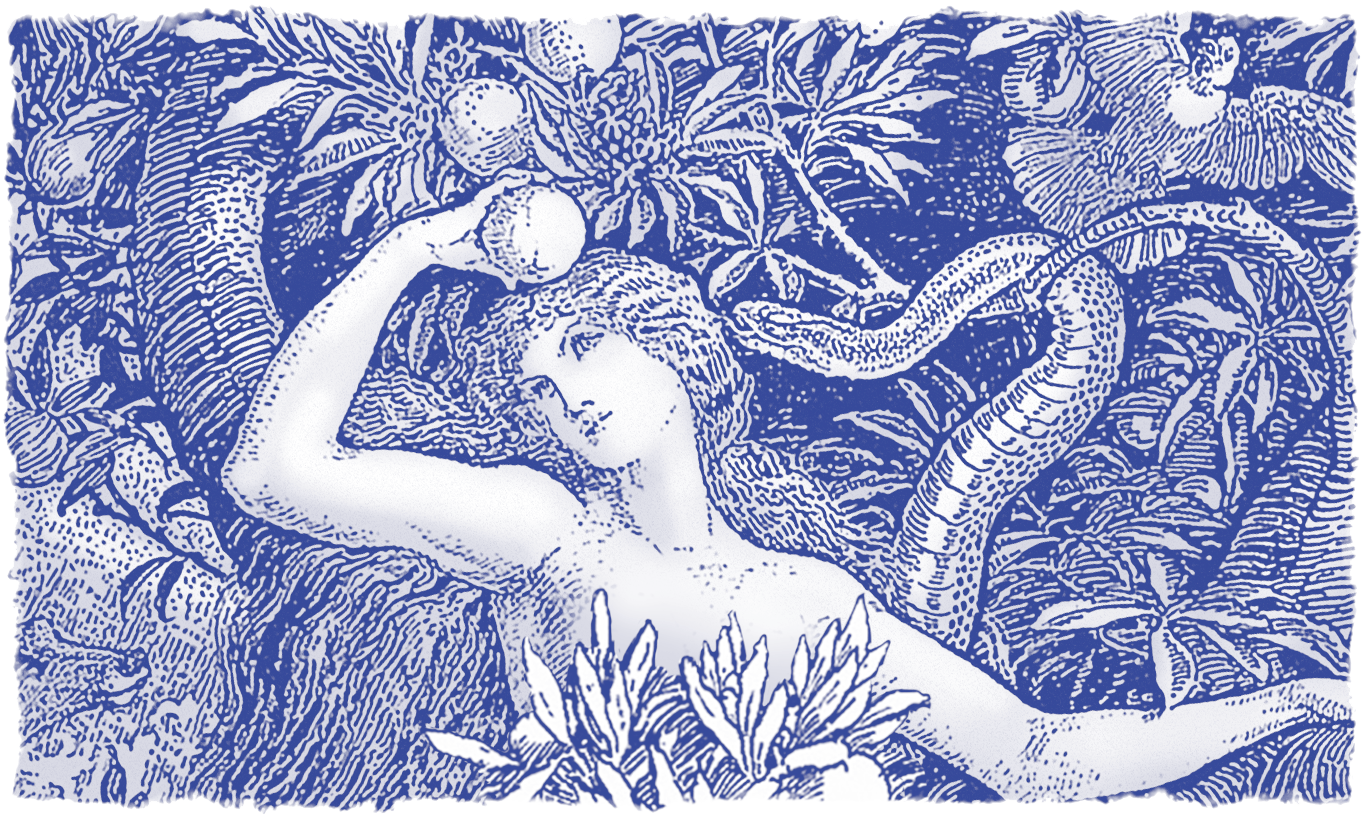
The Key of the Two Women
I’ve often wondered why the first person Yeshua met after His resurrection was a woman. Because all twelve Disciples were men, you’d reason that He would meet them first, and they would be the ones to spread the good news that death was defeated. God made a different choice.
In the Garden of Eden, the snake spoke to Eve, a woman, and lured her away from God’s promises. This encounter changed everything. Eve listened to the snake and brought the fruit of death to Adam (man). When they ate the fruit, it opened the door to sin in their lives and in all of mankind, as well as to the rest of God’s creation (as hypothesized in the Separation Theory that Part 1 discussed).
After Yeshua’s crucifixion outside Jerusalem, He was buried in a tomb in a garden. Three days later, He rose. Again, we find a woman in a garden. This time we know her exact location — she is just outside of Jerusalem. In John 20, Yeshua meets her in the garden. Again, the woman listens (but this time to God, not the serpent) and tells men (the Disciples).
Two women in two gardens. One’s action begins the fall of man, and one carries the most incredible message of all: the restoration and full redemption of man. I believe that these two encounters occurred in the exact same location.
Part 5: Originally published in the February 2022 Personal Letter.
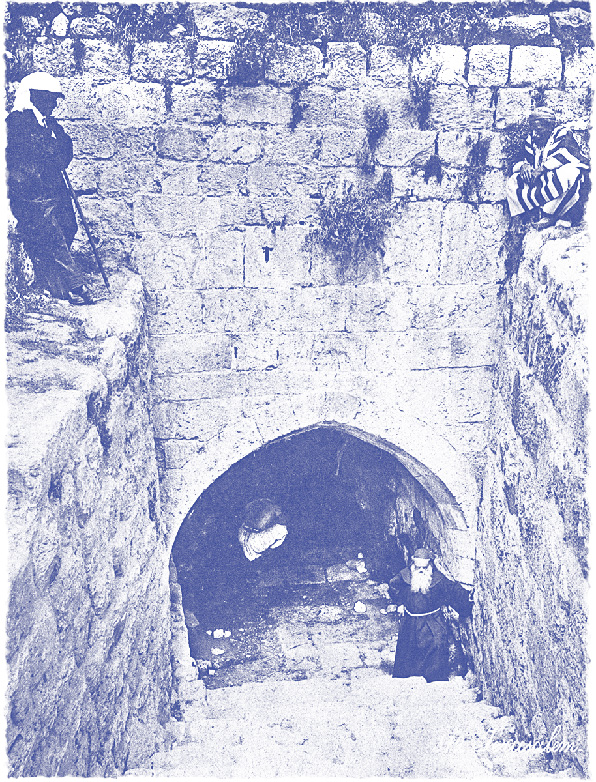
The last part discussed three new keys:
- The key of inheritance: While Adam and Eve were cast out (of the Garden) toward the east, Abraham set out from the east to go to the land of the inheritance God promised him. God leads Abraham to Mount Moriah, where God asks the patriarch to sacrifice his son Isaac. This foreshadows what will happen forty-two generations later, when God will sacrifice His own Son to restore humanity to Himself on that same mountain.
- The key of the sacrifice: The sacrifice of the red heifer mirrors the sacrificial death of Yeshua (Jesus). The sacrifice happened outside of the camp, in the presence of the High Priest, to cleanse the people from death. Yeshua’s death, however, was not a reoccurring sacrifice; it was an enduring one.
- The key of the two women: In the Garden of Eden, a woman (Eve) believes a lie and shares it with man, which initiates the cycle of sin. After Yeshua was crucified, another woman (Mary Magdalene) and at least two others receive the message of truth about the redemption of humanity and share it with men — the disciples waiting in the upper room.
The Key of Restoring Waters
In the first part of this series, I discussed the four rivers that originated from one source, a river flowing eastward from Eden. One of the four rivers was called the Gihon. While we cannot locate any river by that name on a map today, we know of a spring named Gihon in Jerusalem.
During the time of the second Temple, water from this spring would be poured out as “living water” on the altar during the festival of Sukkot. Yeshua (Jesus) stood there and cried out as we read in John’s Gospel: “On the last and greatest day of the festival, Jesus stood and said in a loud voice, ‘Let anyone who is thirsty come to Me and drink. Whoever believes in Me, as Scripture has said, rivers of living water will flow from within them’ ” (John 7:37–38).
King Hezekiah blocked the upper part of the Gihon Spring while building up new defenses ahead of the attack by King Sennacherib of Assyria. Hezekiah allowed the lower part of the waters to flow from the city of David eastward down the Kidron Valley, through the desert, and toward the Dead Sea (2 Chronicles 32:30).
Today it is hard to determine if there is a spring flowing under the Temple Mount. No archeologist can excavate the area. The Jordanian Islamic trust, the Waqf, controls it, and likely fears that evidence of the Jewish city and/or Temple might be found there. But historical evidence from the early 19th century (from Western archaeologists who visited the site) suggests that there is a water source that connected to the lower Gihon that originates under the Temple Mount.
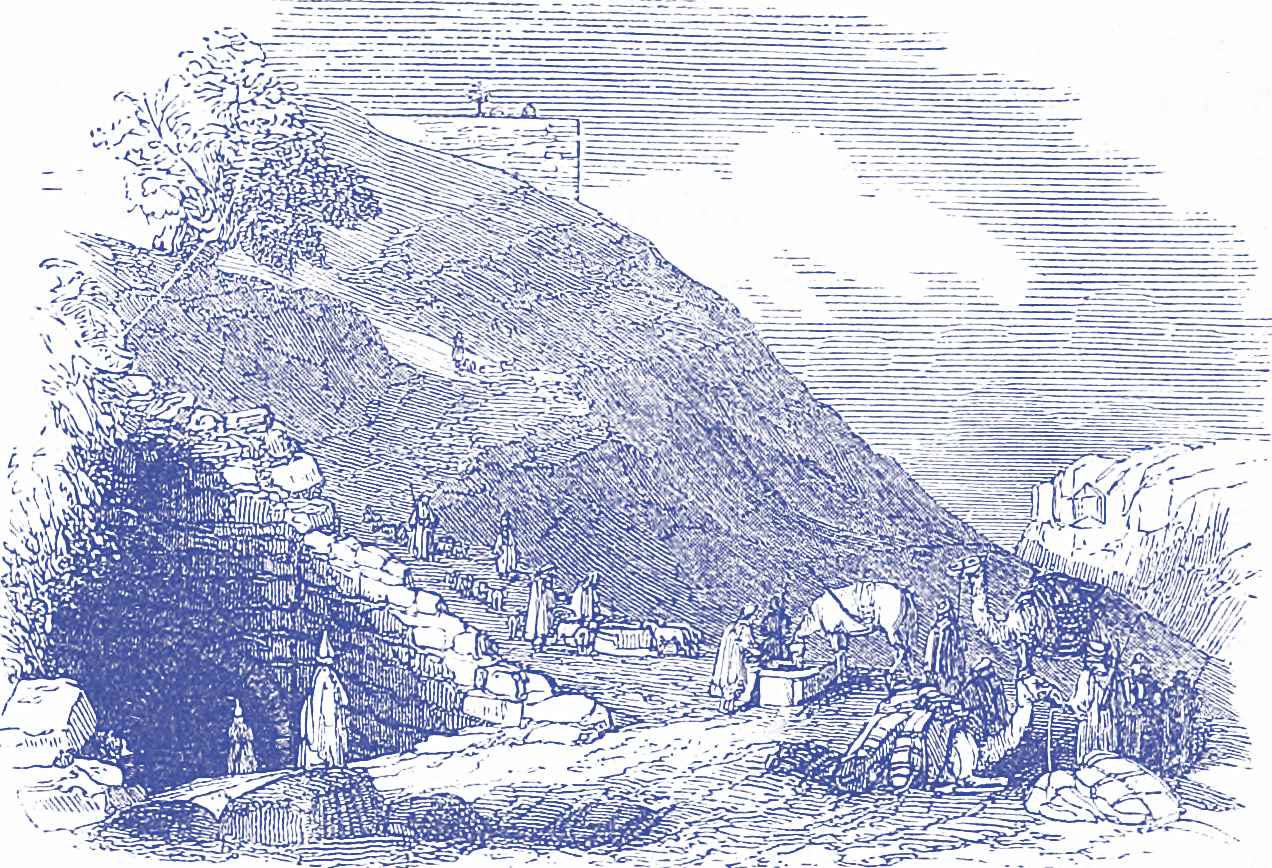
Several Biblical prophecies (Zechariah 14:3–9; Joel 3:18; Ezekiel 47:1–12) mention that these waters will become supernaturally restorative living waters.
In the first part of this series, I discussed a concept called the Separation Theory. According to this theory, it is plausible that the Gihon we see today is the “body” of that spiritual river of life. If so, when Yeshua (Jesus) returns, and the new Jerusalem descends from Heaven, this river will be restored as in the days of Eden.
The Key of the Plains Of Jordan
The Bible refers to the area east of Jerusalem (between the Judean desert and the hills of Moab) as the plains of Jordan or the Aravah. This area includes the city of Jericho, the Dead Sea, and the general area of Sodom and Gomorrah (we don’t know their exact location). If you have visited the Aravah, you know it is a vast, dry desert as far as the eye can see, in every direction. But this was not always the case.
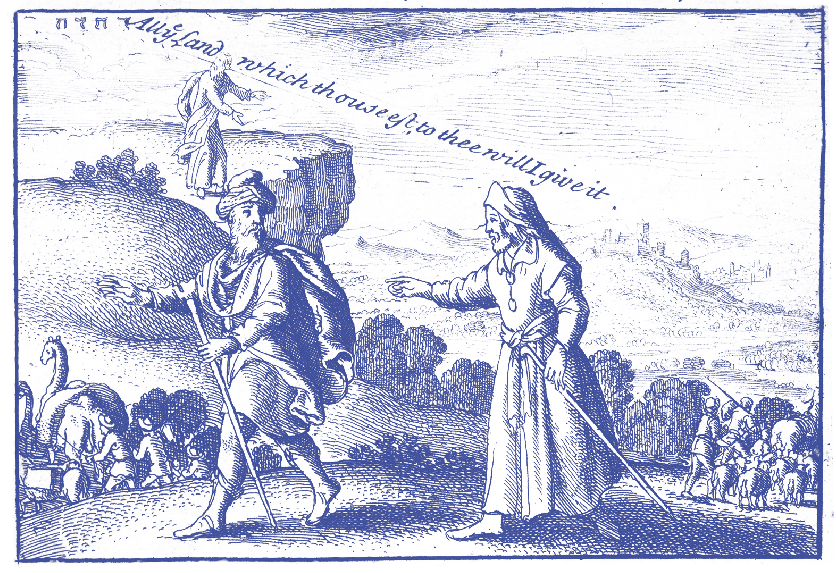
When Abraham and Lot decided to part ways, Abraham gave his nephew first choice of the land. Genesis 13:10 states, “Lot looked around and saw that the whole plain of the Jordan toward Zoar was well watered, like the garden of the Lord, like the land of Egypt. (This was before the Lord destroyed Sodom and Gomorrah.)” Therefore, what do the Garden of Eden, the plains of Jordan (Aravah), and Egypt all have in common? They are all watered well by a river.
As with the river flowing from the city of God toward the east, we find many prophecies of an amazing restoration that will occur in the Aravah. A few of the passages that refer to this incredible change include Isaiah 35:1–6; 41:17–20; 43:16–20; and 58:11.
Look at the geographical and spiritual picture that emerges in the Garden of Eden series: God planted a garden in Eden (to the east, Genesis 2:8) and a river flows eastward from this Garden (Genesis 2:10) to the Aravah. One day, when the new Jerusalem is established on Earth, a river will flow eastward from Jerusalem, toward the Dead Sea. It will heal the waters of that sea and restore the entire region back to the days of Eden, which could exemplify the prayer of Lamentations 5:21.
The Key of the Circles of History
In the Gemara (a portion of Jewish rabbinical studies, known as part of the oral Torah), scholars refer to three circles of history, each comprising 2,000 years. The writers of the Gemara didn’t believe in Yeshua (Jesus) and in fact rejected Him. But this ordering of history fits the Messianic understanding and that of the Separation Theory almost perfectly.
THE FIRST 2,000 YEARS ARE THE YEARS OF CHAOS:
During these years, the separation of Earth and the spiritual Heaven gradually occurred. We see that during the first 2,000 years since creation, the spiritual and physical world were still connected in accounts like Genesis 6, where the sons of God have relations with the daughters of man. We also see that humans lived for many years, though lifespans grew shorter and shorter through the generations until the time of Abraham.
THE SECOND 2,000 YEARS ARE THE YEARS OF TORAH:
Moses received the Torah on Mount Sinai approximately 500 years after the time of Abraham. The separation of the physical and spiritual worlds was now fully complete, so God gave humanity His law and moral code to live by.
THE THIRD 2,000 YEARS ARE THE YEARS OF MESSIAH:
What was Yeshua’s (Jesus’) message when He went from town to town? “Repent, for the Kingdom of Heaven is at hand” (Matthew 3:2). One day Yeshua (Jesus) will return and reign for a thousand years (Revelation 20:4). For nearly 2,000 years, we have been waiting for His Kingdom to be established on Earth. According to the circles of history, that day is coming soon.
Final Thoughts
In this series, we have investigated whether the Garden of Eden was once in the place where Jerusalem stands today. This study has been exhilarating because it continually points to God’s marvelous plan for restoring humanity to Himself. I cannot imagine more joyous news! I use the information in this series to present the Gospel relying solely upon Old Testament Scriptures.
As you reflect on what you have learned, I offer you a few insightful questions from my scholarly friend Steven Harel, who is both a Believer and an Israeli tour guide:
- We were expelled from the Garden of Eden. Why therefore do we yearn to reach Jerusalem?
- If Eden is God’s house (dwelling place — Genesis 3:8), why would He move houses?
- If everything started in the Garden of Eden, why does it all end in Jerusalem?
Copyright © 2021, 2022 Zola Levitt Ministries
